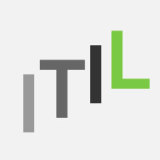ITIL v3 Foundation Certification Notes: Service Strategy

[ITIL® v3 Foundation Study Notes] The Service Strategy lifecycle stage is often considered as the core of the service lifecycle. In Service Strategy stage, the strategic approach for the whole lifecycle is identified to provide values to the customers through IT service management. Below are the important concepts and facts for the ITIL® 4 Foundation Certification.
Article Highlights
Purpose and Scope of Service Strategy
- The purpose of Service Strategy is to define the strategic approach for service management across the whole lifecycle through understanding the business objectives and needs
- Scope of ITIL®’s guide on Service Strategy covers:
- defining a strategy with guidance and recommendations for the service provider to deliver services to meet business outcomes
- defining a strategy for managing these services
Objectives of Service Strategy
- Objectives of Service Strategy:
- provide an understanding of what strategy is
- identify the services, their users and the level of demand
- understand the organizational capability and funding requirements, and coordinate and document the use and optimization of service assets
- understand the definition of value according to the customers
- provide the means to identify opportunities to provide the best services
- deliver a “service provision model”, including the funding, delivery and the purposes of the services
- define the processes and services that will deliver the strategic plans
Why Service Strategy is Important?
- Allow the organization to understand the values of the IT services to the business outcome
- Consistently provide valuable services to the customers / users by understanding the intrinsic values
- Can respond to business change and give competitive capability to the organization
- Know how to prioritize the services requests to bring about maximum ROI
- Deliver services that are seen by the customers to be valuable (delivering business outcome and achieving business objectives)
Key Concepts and Definition
Value Consideration
- Value is defined by customers based on how far the objectives can be matched, the value will change over time
- the customers will determine the mix of features according to their budget
- IT service values are usually intangible
- business outcomes, preferences and perceptions of the customers are used to evaluate the services
- if generated value (what the services achieved) > cost input (what the service cost), the service IT provided is perceived to be valuable
Utility and Warranty
- Utility is the functionality offered by a product or a service to meet a specific customer need / required outcome (what the service does / fit for purpose)
- Warranty provides the assurance that a product or service will meet the agreed requirements (e.g. service level agreement or contract), be reliable in terms of both security and continuity (how the service is delivered / fit for use)
Assets, Resources and Capability
- [definition] Asset is any resource or capability
- Customer asset: asset used by a customer to achieve a business outcome
- Service asset: asset used by a service provider to deliver services to a customer
- [definition] Resources are the direct inputs for the production of services e.g. money, infrastructure items, applications, information, people (capital expenditure as a physical asset).
- [definition] Capabilities are the assets that represent the organization’s ability / knowledge to do something to achieve value, e.g. management, organization, processes, ability to coordinate, control, people’s experience and skills.
- Capabilities requires resources to deliver value.
Governance
- [definition] Governance ensures that policies and strategy are actually implemented, and that required processes are correctly followed. Governance includes defining roles and responsibilities, measuring and reporting, and taking actions to resolve any issues identified.
- Where IT and business meet -> operate together according to direction and policies to achieve objectives
- Governance Structure: Corporate Governance > Corporate Compliance > IT Governance > IT Compliance > IT Service Management
- Corporate governance is about promoting corporate fairness, transparency and accountability
- IT governance is the responsibility of the board of directors and executive management. It is an integral part of enterprise governance and consists of the leadership, organizational structures and processes that ensure that the organization’s IT sustains and extends the organization’s strategies and objectives
- Compliance ensures that a standard or set of guidelines is followed, or that proper, consistent accounting or other practices are being employed
- Service management must include corporate governance standards and policies
- Corporate governance provides the control for the Service Strategy
- ISO / IEC 38500 is the international standard for corporate government in IT
- The strategic policy also plays a significant role in continual service improvement (CSI)
Risk Management in Service Management
- only covers the basic risk management approach
- must be complementary to the corporate approach to corporate risk management
- steps in risk management (a repetitive activity)
- identifying risks – document all potential risks in risk register, to be managed through continual service improvement lifecycle stage
- analysis of risks – quantitative and qualitative analysis
- managing risks – action plans should be tailored for all the risks in the risk register
Patterns of Business Activity
- Pattern of Business Activity (PBA), i.e. activities that are repeated within the organization with a pattern (e.g. daily server load, weekly utilization of space or annual pattern of peak seasons), needs to be identified and documented in the form:
- Classification: type of PBA and its origins, type and impact of outcomes, the workload
- Attributes: frequency, volume, location and duration
- Requirements: performance, security, privacy, tolerance for delays, warranty
- Service Asset Requirements: the demand for resource and capability
Conclusion: ITIL® v3 Foundation Service Strategy
This ITIL® v3 Foundation study note deals with more in-depth description and concepts of the Service Strategy, the first stage in the ITIL® Service Management Lifecycle. In particular, terms like utility, warranty and value creation, assets, resources and capability, governance, risk management, patterns of business activity (PBA) are touched upon.
The second part of the Service Strategy study notes will discuss service portfolio management, financial management, business relationship management, demand management.





 Hi, my name is Edward Chung, PMP, PMI-ACP®, ITIL® Foundation. Like most of us, I am a working professional pursuing career advancements through Certifications. As I am having a full-time job and a family with 3 kids, I need to pursue professional certifications in the most effective way (i.e. with the least amount of time). I share my exam tips here in the hope of helping fellow Certification aspirants!
Hi, my name is Edward Chung, PMP, PMI-ACP®, ITIL® Foundation. Like most of us, I am a working professional pursuing career advancements through Certifications. As I am having a full-time job and a family with 3 kids, I need to pursue professional certifications in the most effective way (i.e. with the least amount of time). I share my exam tips here in the hope of helping fellow Certification aspirants!





